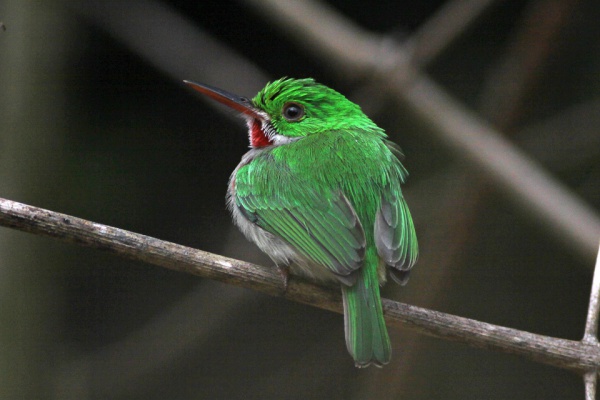Facts About Broad-billed tody
The broad-billed tody is a charming little bird native to Hispaniola, where it shares its habitat with the narrow-billed tody. These diminutive insectivores are easily recognizable by their bright green feathers, pink flanks, and striking red throats. They prefer drier environments below 1,700 meters and are known for their distinctive calls.
Unlike many birds, broad-billed todies do not migrate. They remain in small territories where they hop along branches to hunt for insects. Their breeding season spans from April to July, during which they typically lay one clutch of eggs per season, containing between one and four eggs. The young birds develop rapidly, maturing in just three weeks, after which they venture off to establish their own territories.
These rotund little birds are found throughout the Dominican Republic and Haiti, particularly in arid areas and pine forests. They belong to the Todidae family and the Coraciiformes order. During the breeding season, they engage in courtship displays, build nests, and are very attentive parents.
Their diet primarily consists of insects, but they occasionally consume fruits. They have unique foraging methods, such as the Underleaf-Sally and Sally-Pounce techniques. Despite their short, rounded wings making them inefficient fliers, they excel at hopping from perch to perch.
Currently, the broad-billed tody is not considered threatened by the IUCN, but habitat loss due to human activities is a growing concern. Conservation efforts are essential to protect their woodland habitats and prevent deforestation, ensuring these delightful birds continue to thrive.

 Dominican Republic
Dominican Republic